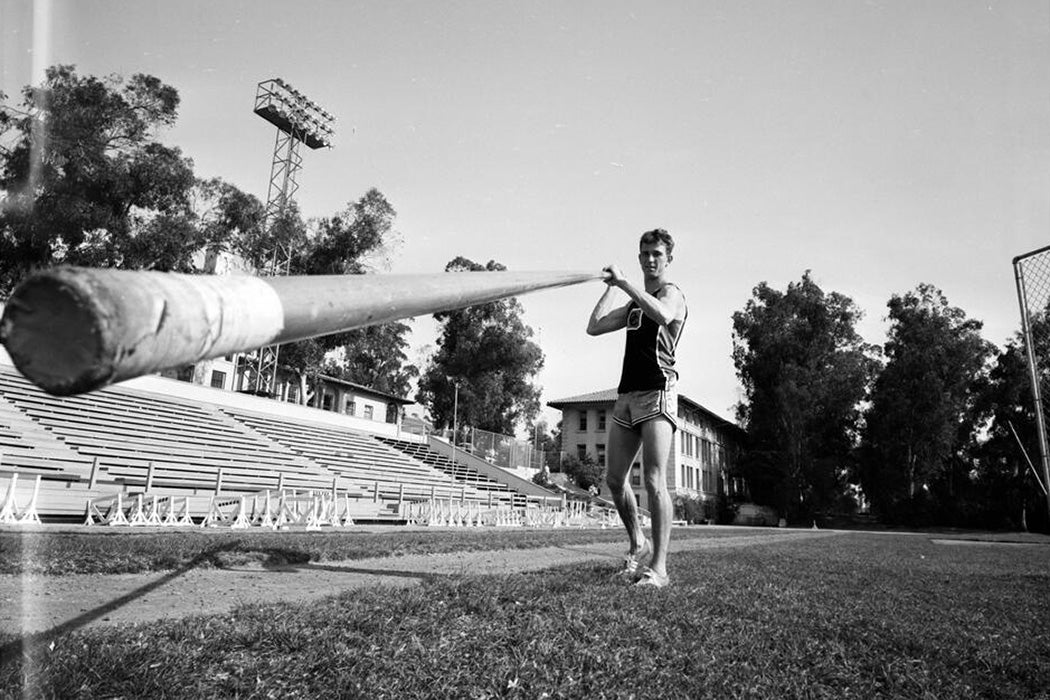The Cold War was fought in a variety of ways. One of them was through sports. The Soviet Union and its “Bloc” of East European client states invested heavily in athletics to impress the world with the prowess of model socialist athletes. International sporting events, with the medal counts of the Olympics in particular, became ideological showcases, contests of who had the best support system for athletes. Who of a certain age can forget grim East German Olympic judges low-scoring every capitalist lackey of a figure skater?
As it happened, the Reds didn’t field the only team in the sports-as-propaganda games. Political scientist Toby Rider and and historian Kevin Witherspoon explore the American strategy of “cultural infiltration” of American athletes in Romania, Poland, and Hungary in the late 1950s.
“At first, Eisenhower aimed to ‘liberate’ Eastern Europe through an aggressive application of psychological warfare and covert operations,” they write. “When it became clear that such methods were unlikely to result in a revolution behind the Iron Curtain, […], the Eisenhower administration switched its strategy,” developing a plan for a more gradual cultural influence, i.e., sports exchanges.
“Sports exchanges aimed to communicate American ideas and values to populations denied access to them,” explain Rider and Witherspoon.
Sports were a common language, competition a non-violent contest of wills and strengths. The US and the USSR used sport meets as tools of diplomacy, goodwill efforts to keep the Cold War cool and to tout themselves. The US hoped athletes aboard would weaken the bonds between the Soviet government and its “captive peoples,” as East Europeans were called in the West.
American infiltration began with the Balkan Games in Bucharest in 1956. Just three American athletes competed, but pole vaulter Bob Gutowski was the hit of the games. After the official match, he continued vaulting to the roaring approval of 30,000 spectators in the stands. Proceeding to surpass his day’s winning vault, he first broke the Romanian record and then the European record. He missed the world record (4.60 meters) three times, but the stadium full of new fans didn’t seem to mind. The US ambassador was very impressed. The next year, world champion shot putter and “Athlete of the Meet” Parry O’Brien got a standing ovation from the Bucharest crowd.
In 1958, seventy-one American athletes traveled across the Curtain for the “Match of the Century” in Moscow followed by meets in Warsaw and Budapest. Receptions in Poland and Hungary—where Americans felt they had to tread cautiously in the aftermath of the failed revolution of 1956—were impressive. Locals went all out in hosting the Americans, clearly trying to one-up the Soviet reception. Meanwhile, “crowd response to Soviet athletes was lukewarm, and at times even adversarial, revealing rifts of discontent within the Soviet bloc.” The “captive peoples” poked the Soviet bear any way they could. “Here we were, deep inside the Iron Curtain—and they openly favored us!” exclaimed a surprised Parry O’Brien.
“Sports exchanges were both stages for symbolic combat and, at the same time, opportunities for dialogue and understanding,” write Rider and Witherspoon.
Weekly Newsletter
One opportunity Americans scored on was on the subject of race relations. “Black and white American athletes cooperating and interacting on friendly basis provided a subtle yet powerful challenge” to the Soviet focus on America’s de jure and de facto system of apartheid. With non-violent demands for civil rights being met with terror in the American South, the US was seriously weakened on the international front. The Soviets just had to point to the news. Multiracial sports contingents helped counteract this crippling fault in America’s Cold War cultural front.
Athlete exchanges were a two-way street that only increased through the 1960s and 1970s. After 1957, Soviet Bloc visitors to the US were no longer fingerprinted: the US wanted them to be surrounded by Americans and Americanisms. Sporting events beyond the Iron Curtain became opportunities for defection, with Maria Provazanikova, a Czech gymnast official, setting the precedent as the first Olympic defector in 1948.
Support JSTOR Daily! Join our new membership program on Patreon today.







